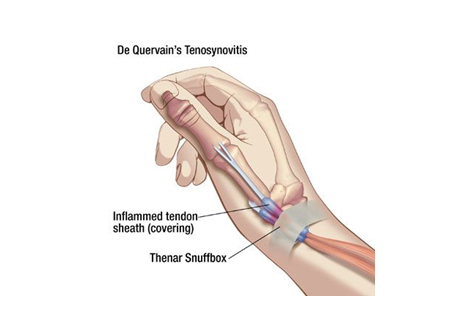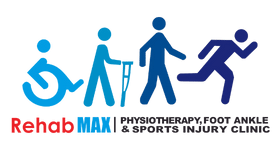DEQUERVAINS TENOSYNOVITIS INCIDENCE

It is the second most common entrapment tendinitis of the hand and wrist with prevalence being 8-17%.
It is 10 times more frequently to be found in women’s health symptoms as compared to men. The condition is most common between 30-50 years of age.
ABOUT THE CONDITION
De Quervain tenosynovitis is entrapment tendinitis of the tendons contained within the first dorsal compartment at the wrist.
The tendons of the abductor pollicis longus and the extensor pollicis brevis are tightly secured against the radial styloid by the overlying extensor retinaculum. Any thickening of the tendons from acute or repetitive trauma restrains gliding of the tendons through the sheath.
Movements at the thumb, especially when combined with radial or ulnar deviation of the wrist, cause pain and perpetuate the inflammation and swelling, tender to touch.
Causes may include chronic overuse injury, direct trauma leading to scar tissue formation, or inflammatory arthritis.
TREATMENT
- A thumb spica brace (if needed) reduces pain by immobilizing the thumb and the wrist joint, thereby preventing thumb metacarpophalangeal joint flexion and wrist ulnar deviation.
- Icing to reduce swelling and tenderness
- Ultrasound therapy
- Soft tissue releases for the forearm muscles to relax them and enhance drainage of fluid from the muscle tissue.
- Along with increasing control of the wrist muscles, eccentric exercises will also assist soft tissue mobilization and promote healing.
- Daily activity modifications are required on a long-term basis to allow for neutral wrist positioning.
- Sometimes corticosteroid injection is delivered into the first dorsal compartment if the pain is severe.
- Surgical release of the first dorsal compartment needs to be performed if the pain doesn’t subside with conservative management.
- Postoperative physiotherapy is started 2 weeks post-surgery which includes improving range of motion, scar, and edema management.
- Strengthening and return to functional activity are gradually started after 4 weeks of surgery.

